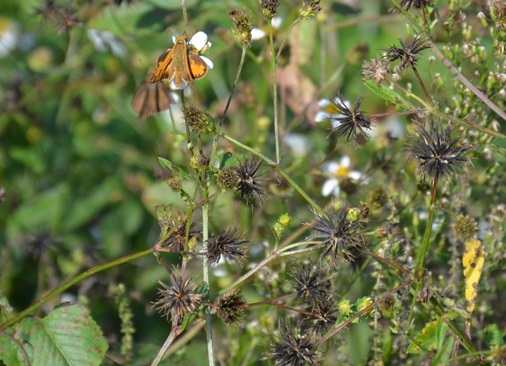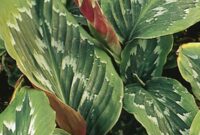Hitchhiking plants are a fascinating group of plants that have evolved unique mechanisms for dispersing their seeds and propagating across different environments.
Unlike many plants that rely on wind, animals, or water for seed dispersal, hitchhiking plants have specialized adaptations to attach themselves to the fur, feathers, or clothing of passing animals, as well as vehicles and even human activities.
These adaptations allow them to travel far and wide, often colonizing new habitats and contributing to the spread of plant diversity.
Some common examples of hitchhiking plants include:
- Burdock (Arctium spp.): Burdock plants produce spiky burrs that easily attach to the fur of animals or clothing. This enables them to hitch rides to new locations where they can establish themselves.
- Dandelion (Taraxacum spp.): Dandelion seeds are equipped with a parachute-like structure that helps them catch the wind and travel long distances.
- Cleavers (Galium aparine): Also known as “sticky willy” or “velcro plant,” cleavers have tiny hooked hairs on their stems and leaves that allow them to cling to passing animals or humans.
- Sycamore Maple (Acer pseudoplatanus): This tree species produces seeds with a winged structure that causes them to spin like helicopters as they fall, aiding in their dispersal.
Hitchhiking plants play significant roles in ecosystem dynamics, contributing to the spread of plant diversity and shaping local ecosystems.
However, they can also become invasive species in new environments, outcompeting native flora and potentially disrupting ecosystems.
Understanding the ecological implications of hitchhiking plants and employing effective management strategies is crucial for biodiversity conservation efforts.
.
Burdock (Arctium spp.):
Burdock is a group of plant species known for their unique method of seed dispersal, which involves hitching a ride on the fur of animals or attaching themselves to clothing and accessories. Here’s a more detailed explanation:
- Seed Dispersal Mechanism: Burdock plants produce spherical seed heads covered in spiky burrs. These burrs are designed to stick to the fur of passing animals, such as mammals like deer or even domestic pets like dogs and cats. They can also easily attach to clothing worn by humans. When an animal or person brushes against a mature burdock plant, the burrs cling to the surface.
- Transportation: Once the burrs have attached themselves, they act as tiny hitchhikers, traveling along with the host animal or human. This transportation can cover significant distances, as the animals or people move about their environment.
- Establishment: When the burr-bearing animals or humans come into contact with other areas, such as fields, forests, or gardens, the burrs can detach and fall to the ground. Here, the burdock seeds have a chance to germinate and establish new burdock plants, potentially in locations far from their parent plant.
- Habitat Preference: Burdock plants are often found in disturbed areas, along roadsides, in fields, and at the edges of woodlands. They are hardy plants that can thrive in various soil types and climates.
The hitchhiking strategy of burdock plants allows them to disperse their seeds efficiently and find new areas for growth.
While this adaptation has made them successful at spreading, it has also led to concerns about their potential as invasive species in some regions.
Understanding the behavior of hitchhiking plants like burdock is crucial for managing their impact on ecosystems and native plant species.
.
Dandelion (Taraxacum spp.):
Dandelion is a common hitchhiking plant known for its unique seed dispersal mechanism, which involves the use of a parachute-like structure to catch the wind and travel long distances.
Here’s a more detailed explanation:
- Seed Dispersal Mechanism: Dandelion seeds are attached to a structure called a “pappus,” which resembles a parachute or umbrella. Each dandelion seed is equipped with this fluffy, umbrella-like pappus. When the dandelion seed head matures, it opens up, exposing the pappus.
- Wind Dispersal: The pappus of the dandelion acts as a natural airfoil. When the wind blows, it catches the lightweight seeds and carries them away from the parent plant. The seeds can travel for considerable distances on the wind, often resembling tiny, floating parachutes as they disperse.
- Establishment: As the wind carries the dandelion seeds, they can land in various locations, including fields, gardens, lawns, and open spaces. When they land in suitable soil, the seeds can germinate and establish new dandelion plants. This allows dandelions to colonize new areas and thrive in a wide range of environments.
- Adaptability: Dandelions are adaptable plants that can grow in diverse conditions. They are often found in disturbed habitats, but they can also establish themselves in lawns, meadows, and even cracks in sidewalks. Their ability to disperse seeds efficiently contributes to their widespread distribution.
Dandelions are well-known for their ability to disperse seeds over long distances through wind, and their bright yellow flowers are a common sight in many regions.
While some people consider them weeds, dandelions also have ecological value as a food source for pollinators and as a pioneering plant in disturbed areas.
Understanding their seed dispersal mechanism helps us appreciate their ecological role and adaptability.
.
Cleavers (Galium aparine):
Cleavers, also known as “sticky willy” or “velcro plant,” are a type of hitchhiking plant with a unique mechanism for seed dispersal. Here’s a more detailed explanation:
- Seed Dispersal Mechanism: Cleavers have tiny hooked hairs on their stems and leaves. These hooked hairs are what give them their nickname “sticky willy.” When the plant matures and produces seeds, these seeds are covered in small hooks or bristles.
- Attachment to Passersby: As the plant grows and the seeds ripen, they become sticky due to the hooked hairs. When an animal, bird, or human comes into contact with the cleavers plant, the seeds attach themselves to the passing surface. This is often facilitated by the hooks on the seeds, which latch onto fur, feathers, clothing, or any object they come in contact with.
- Transportation: Once the seeds have attached themselves to a carrier, they can be transported to new locations. Animals, particularly those with fur or feathers, are common carriers for cleavers seeds. As the carrier moves about, the seeds are carried with them, potentially covering significant distances.
- Establishment: When the seeds eventually detach from the carrier, they fall to the ground. If the conditions are suitable, the seeds can germinate and grow into new cleavers plants. This allows cleavers to colonize new areas and habitats.
- Preferred Habitat: Cleavers are often found in damp or moist environments, such as woodlands, along riverbanks, and in gardens. They thrive in areas where their sticky seed dispersal mechanism can be effective.
Cleavers are a prime example of hitchhiking plants that have evolved to take advantage of passing animals or humans for seed dispersal. Their unique adaptation allows them to explore new areas and habitats, making them an interesting subject of study in plant ecology.
.
Sycamore Maple (Acer pseudoplatanus):
The Sycamore Maple is a tree species known for its distinctive seed dispersal mechanism, which involves “helicopter seeds” that spin gracefully as they fall, aiding in their dispersal. Here’s a more detailed explanation:
- Seed Dispersal Mechanism: Sycamore Maple trees produce winged seeds known as “samaras.” Each samara consists of a central seed surrounded by a wing-like structure. This wing allows the seed to catch the wind and spin as it falls from the tree.
- Helicopter-like Flight: As the Sycamore Maple’s samaras mature and are released from the tree, they descend gracefully, spinning like tiny helicopters. The spinning motion is caused by the wind’s interaction with the winged structure of the samara. This motion allows the samaras to cover considerable distances from the parent tree.
- Wind Dispersal: The spinning samaras are carried by the wind, which can carry them to new locations far from the parent tree. This method of dispersal helps Sycamore Maple trees spread their seeds over a wide area, potentially colonizing new habitats.
- Establishment: When the samaras land on the ground, they have the opportunity to germinate and grow into new Sycamore Maple trees if the environmental conditions are favorable. This allows the species to expand its range and thrive in various types of forests and woodlands.
- Preferred Habitat: Sycamore Maple trees are commonly found in mixed forests and woodlands in Europe. They are well-adapted to various soil types and climate conditions.
The Sycamore Maple’s use of spinning samaras as a seed dispersal mechanism is not only a marvel of nature but also a strategy that enhances the tree’s ability to colonize new areas and adapt to different environments.
This mechanism, resembling the flight of helicopters, demonstrates the diverse ways in which plants have evolved to disperse their seeds efficiently.



